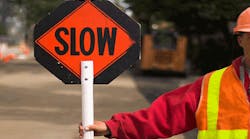Powerful testimony from workers and labor advocates called on legislators to close a loophole in Massachusetts’ safety laws that has resulted in hundreds of public employee injuries and deaths, according to worker advocates.
Currently, Massachusetts private sector and executive branch workers are covered under the federal Occupational Safety and Health Act (OSHA), but the law for other public employees is vague, causing widespread confusion about whether OSHA measures are required.
In 2014, an estimated 1,500 Massachusetts municipal employees suffered injuries serious enough to be out of work for five or more days, and several were killed on the job, including Michael F. McDaniel Jr. of Natick, Mass. Yet an examination of over a dozen state labor department safety investigations found that virtually all these incidents might have been prevented had federal OSHA measures been in place, as they are for all other workers in the state.
“Our members work hard to keep our cities and towns safe – repairing bridges, fixing potholes, helping children get to school safely,” said Mark DelloRusso, president of SEIU Local 888, a statewide public services union. “Municipal employees should be able to go to work knowing that basic measures are in place to keep them safe.”
Dozens of public employees, occupational health experts and union leaders attended the Joint Committee on Labor and Workforce Development hearing, urging the legislature to pass an act to further define Standards of Employee Safety (HB1756, SB 999), which would specify that all public agencies must comply with national occupational safety standards to reduce work-related injuries and deaths. They say current law has led to confusion across the state about the responsibility of municipalities and other public employers regarding OSHA protections.
“Worker safety is of utmost importance, and this legislation is an important step in securing equal protection for all workers in the Commonwealth,” said Senator Marc R. Pacheco (D, Taunton). “Providing public employees with the same safety standards experienced by those in the private sector is long overdue.”
Massachusetts General Law Chapter 149, Section 6 gives the state Department of Labor Standards (DLS) the authority to respond to complaints and investigate injuries and deaths in place of OSHA. DLS uses this authority to encourage and inform public agencies that they expect them to comply with OSHA regulations as a minimum standard of employee protection. However, current state law does not directly cite OSHA regulations as the minimum safety standard for city, town, higher education and public authority workers.
Review Notes Dozens of Serious Injuries
A review of more than a dozen DLS investigation reports by the Massachusetts Coalition of Occupational Safety and Health (MassCOSH), a nonprofit workplace safety education and advocacy organization, documented public employees experiencing electrical shock, lacerations, amputations and broken limbs throughout the commonwealth. The reports point out which OSHA measures the public agency needs to enact to prevent employees from experiencing similar injuries.
In one such report, a forestry worked employed by a municipality in the greater Boston-area “sustained an amputation and crushing injuries to his ring and pinky fingers” while repairing a telescoping boom mowing machine. In their investigation, DLS identified several conditions that put workers at risk and identified OSHA measures that would prevent future such injuries.
Rick Rabin, a former DLS environmental engineer who volunteers at MassCOSH, testified to legislators about what he witnessed in his 20-year tenure at the state safety agency.
“In one case, an OSHA inspector called to say that he had come upon city workers repairing a water pipe in a trench with no protection from a deadly cave-in,” said Rabin. “When urged to evacuate the site until a protective ‘trench box’ could be installed, the public works supervisor refused, saying that OSHA regulations did not apply to municipalities.”
These and other serious health and safety hazards – such as climbing into sewers, replacing signs and fixtures at heights and repairing roads in heavy traffic – are encountered by public employees on a regular basis. Twenty-six states have laws on the books covering public workers under OSHA. Massachusetts - along with Texas, Alabama and Mississippi – make up the remaining states that have their own laws regarding public workers.
“HB 1756/SB 999 gives us the opportunity to lead the charge to keep all public workers safe while on the job,” said Joe Dorant, president, Massachusetts Organization of State Engineers & Scientists (MOSES). “The day-to-day risks that our public employees face while working are as threatening, if not more so, as those faced by their counterparts in the private sector. The state’s recently instituted federal OSHA protections for executive branch employees is an excellent start, but excludes equally vital workers with quasi-state agencies and municipalities that serve the needs of the commonwealth."
Experts cite that covering public workers under OSHA would not increase costs to the state, and may even lower them. According to Liberty Mutual’s Research Institute for Safety, employers save $4 to $6 for every dollar spent on a health and safety program.
“The legislature took an important first step by extending OSHA protection to executive branch employees last session,” said NAGE National President David Holway. “Now is the time to extend those protections to the rest of the state workforce. We are hopeful that the Joint Committee on Labor and Workforce Development will act swiftly and favorably on this important legislation, which is long overdue.”

